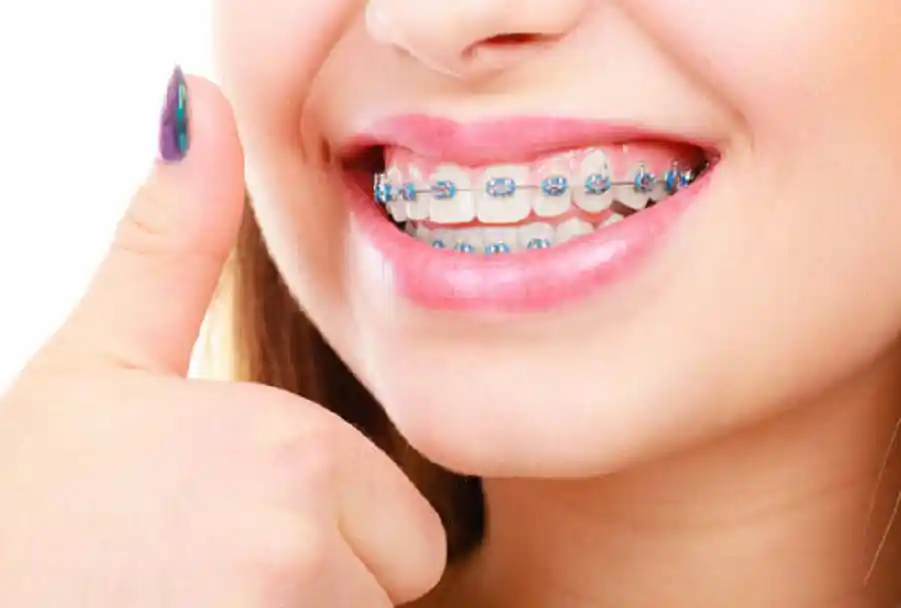Teeth Braces, also known as dental braces, have become a transformative solution for achieving a straight and confident smile. This orthodontic treatment has evolved significantly over the years, offering not only improved functionality but also enhanced aesthetics. In this comprehensive guide, we will delve into the world of teeth braces, exploring their types, benefits, maintenance, and the life-changing impact they can have on your oral health.
Types of Teeth Braces:
1. Traditional Metal Braces:
Traditional metal braces are the most common and recognizable type. They consist of metal brackets bonded to each tooth and connected by wires. Despite their conspicuous appearance, modern designs are more comfortable and effective.
2. Ceramic Braces:
Ceramic braces share a similar structure with metal braces but use tooth-colored or clear brackets and wires, making them less noticeable. They are a popular choice for those seeking a more discreet option while maintaining the benefits of traditional braces.
3. Lingual Braces:
Lingual braces are placed on the inner surface of the teeth, making them virtually invisible from the outside. This option is particularly attractive to individuals who want the benefits of braces without the aesthetic impact of visible brackets.
4. Invisalign:
Invisalign represents a revolutionary approach to orthodontic treatment. Instead of brackets and wires, Invisalign uses a series of clear, removable aligners to gradually shift the teeth into the desired position. This option is favored for its discreet nature and the convenience of being able to remove the aligners for eating and cleaning.
Benefits of Teeth Braces:
1. Correcting Misalignments:
The primary purpose of teeth braces is to correct misalignments and malocclusions. This not only enhances the aesthetic appeal of your smile but also improves the functionality of your teeth, leading to better oral health.
2. Preventing Dental Issues:
Braces play a crucial role in preventing various dental issues that can arise from misaligned teeth, such as cavities, gum disease, and abnormal wear on tooth surfaces. By aligning the teeth properly, braces contribute to a healthier mouth in the long run.
3. Boosting Confidence:
A straight and well-aligned smile can significantly boost confidence and self-esteem. Braces not only address physical issues but also provide a psychological benefit by giving individuals the smile they have always desired.
4. Improving Speech:
Misaligned teeth can impact speech patterns. Braces help in aligning the teeth, which, in turn, can contribute to clearer and more articulate speech.
Maintenance and Care:
1. Regular Dental Check-ups:
Regular visits to the orthodontist are crucial for monitoring the progress of the treatment and making any necessary adjustments. These check-ups also ensure that the braces are not causing any discomfort or issues.
2. Oral Hygiene:
Maintaining proper oral hygiene is essential during orthodontic treatment. Patients with braces should pay extra attention to brushing and flossing to prevent plaque buildup and cavities. Specialized brushes and floss threaders can aid in cleaning around the brackets and wires.
3. Dietary Considerations:
Certain foods can damage braces or increase the risk of complications. Hard, sticky, or crunchy foods should be avoided to prevent damage to the braces. Orthodontic patients are often advised to steer clear of items like popcorn, hard candies, and ice.
Life-Changing Impact:
1. Improved Oral Health:
The corrective nature of braces not only enhances the appearance of the smile but also contributes to improved oral health. Properly aligned teeth are easier to clean, reducing the risk of dental issues such as cavities and gum disease.
2. Long-Term Stability:
The benefits of braces extend beyond the treatment period. Once the braces are removed, patients typically wear retainers to help maintain the newly achieved alignment. This ensures the long-term stability of the results.
3. Enhanced Quality of Life:
Individuals who undergo orthodontic treatment often report an enhanced quality of life. A straight and healthy smile can positively impact personal and professional relationships, leading to increased self-confidence and overall well-being.
Teeth braces have come a long way in providing effective solutions for individuals seeking a straighter smile and improved oral health. Whether opting for traditional metal braces, ceramic braces, lingual braces, or the innovative Invisalign system, the transformative impact on both appearance and function is undeniable. Embracing the journey towards a beautiful smile through teeth braces is not only an investment in one’s oral health but also a step towards greater confidence and a brighter future. Beyond the visible changes, the impact of braces on oral health cannot be overstated. Correcting misalignments not only enhances the overall aesthetic appeal but also acts as a preventive measure against potential dental issues.
Unlock the secrets to Invisalign success and cost considerations in this comprehensive guide.

